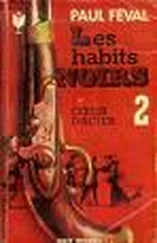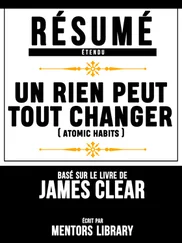As I put the finishing touches on this book in 2018, jamesclear.com is receiving millions of visitors per month and nearly five hundred thousand people subscribe to my weekly email newsletter—a number that is so far beyond my expectations when I began that I’m not even sure what to think of it.
HOW THIS BOOK WILL BENEFIT YOU
The entrepreneur and investor Naval Ravikant has said, “To write a great book, you must first become the book.” I originally learned about the ideas mentioned here because I had to live them. I had to rely on small habits to rebound from my injury, to get stronger in the gym, to perform at a high level on the field, to become a writer, to build a successful business, and simply to develop into a responsible adult. Small habits helped me fulfill my potential, and since you picked up this book, I’m guessing you’d like to fulfill yours as well.
In the pages that follow, I will share a step-by-step plan for building better habits—not for days or weeks, but for a lifetime. While science supports everything I’ve written, this book is not an academic research paper; it’s an operating manual. You’ll find wisdom and practical advice front and center as I explain the science of how to create and change your habits in a way that is easy to understand and apply.
The fields I draw on—biology, neuroscience, philosophy, psychology, and more—have been around for many years. What I offer you is a synthesis of the best ideas smart people figured out a long time ago as well as the most compelling discoveries scientists have made recently. My contribution, I hope, is to find the ideas that matter most and connect them in a way that is highly actionable. Anything wise in these pages you should credit to the many experts who preceded me. Anything foolish, assume it is my error.
The backbone of this book is my four-step model of habits—cue, craving, response, and reward—and the four laws of behavior change that evolve out of these steps. Readers with a psychology background may recognize some of these terms from operant conditioning, which was first proposed as “stimulus, response, reward” by B. F. Skinner in the 1930s and has been popularized more recently as “cue, routine, reward” in The Power of Habit by Charles Duhigg.
Behavioral scientists like Skinner realized that if you offered the right reward or punishment, you could get people to act in a certain way. But while Skinner’s model did an excellent job of explaining how external stimuli influenced our habits, it lacked a good explanation for how our thoughts, feelings, and beliefs impact our behavior. Internal states—our moods and emotions—matter, too. In recent decades, scientists have begun to determine the connection between our thoughts, feelings, and behavior. This research will also be covered in these pages.
In total, the framework I offer is an integrated model of the cognitive and behavioral sciences. I believe it is one of the first models of human behavior to accurately account for both the influence of external stimuli and internal emotions on our habits. While some of the language may be familiar, I am confident that the details—and the applications of the Four Laws of Behavior Change—will offer a new way to think about your habits.
Human behavior is always changing: situation to situation, moment to moment, second to second. But this book is about what doesn’t change. It’s about the fundamentals of human behavior. The lasting principles you can rely on year after year. The ideas you can build a business around, build a family around, build a life around.
There is no one right way to create better habits, but this book describes the best way I know—an approach that will be effective regardless of where you start or what you’re trying to change. The strategies I cover will be relevant to anyone looking for a step-by-step system for improvement, whether your goals center on health, money, productivity, relationships, or all of the above. As long as human behavior is involved, this book will be your guide.
THE
FUNDAMENTALSWhy Tiny Changes Make a Big Difference
1 The Surprising Power of Atomic Habits
THE FATE OF British Cycling changed one day in 2003. The organization, which was the governing body for professional cycling in Great Britain, had recently hired Dave Brailsford as its new performance director. At the time, professional cyclists in Great Britain had endured nearly one hundred years of mediocrity. Since 1908, British riders had won just a single gold medal at the Olympic Games, and they had fared even worse in cycling’s biggest race, the Tour de France. In 110 years, no British cyclist had ever won the event.
In fact, the performance of British riders had been so underwhelming that one of the top bike manufacturers in Europe refused to sell bikes to the team because they were afraid that it would hurt sales if other professionals saw the Brits using their gear.
Brailsford had been hired to put British Cycling on a new trajectory. What made him different from previous coaches was his relentless commitment to a strategy that he referred to as “the aggregation of marginal gains,” which was the philosophy of searching for a tiny margin of improvement in everything you do. Brailsford said, “The whole principle came from the idea that if you broke down everything you could think of that goes into riding a bike, and then improve it by 1 percent, you will get a significant increase when you put them all together.”
Brailsford and his coaches began by making small adjustments you might expect from a professional cycling team. They redesigned the bike seats to make them more comfortable and rubbed alcohol on the tires for a better grip. They asked riders to wear electrically heated overshorts to maintain ideal muscle temperature while riding and used biofeedback sensors to monitor how each athlete responded to a particular workout. The team tested various fabrics in a wind tunnel and had their outdoor riders switch to indoor racing suits, which proved to be lighter and more aerodynamic.
But they didn’t stop there. Brailsford and his team continued to find 1 percent improvements in overlooked and unexpected areas. They tested different types of massage gels to see which one led to the fastest muscle recovery. They hired a surgeon to teach each rider the best way to wash their hands to reduce the chances of catching a cold. They determined the type of pillow and mattress that led to the best night’s sleep for each rider. They even painted the inside of the team truck white, which helped them spot little bits of dust that would normally slip by unnoticed but could degrade the performance of the finely tuned bikes.
As these and hundreds of other small improvements accumulated, the results came faster than anyone could have imagined.
Just five years after Brailsford took over, the British Cycling team dominated the road and track cycling events at the 2008 Olympic Games in Beijing, where they won an astounding 60 percent of the gold medals available. Four years later, when the Olympic Games came to London, the Brits raised the bar as they set nine Olympic records and seven world records.
That same year, Bradley Wiggins became the first British cyclist to win the Tour de France. The next year, his teammate Chris Froome won the race, and he would go on to win again in 2015, 2016, and 2017, giving the British team five Tour de France victories in six years.
During the ten-year span from 2007 to 2017, British cyclists won 178 world championships and sixty-six Olympic or Paralympic gold medals and captured five Tour de France victories in what is widely regarded as the most successful run in cycling history.*
How does this happen? How does a team of previously ordinary athletes transform into world champions with tiny changes that, at first glance, would seem to make a modest difference at best? Why do small improvements accumulate into such remarkable results, and how can you replicate this approach in your own life?
Читать дальше




![Джеймс Клир - Атомные привычки [Как приобрести хорошие привычки и избавиться от плохих]](/books/403243/dzhejms-klir-atomnye-privychki-kak-priobresti-horosh-thumb.webp)



